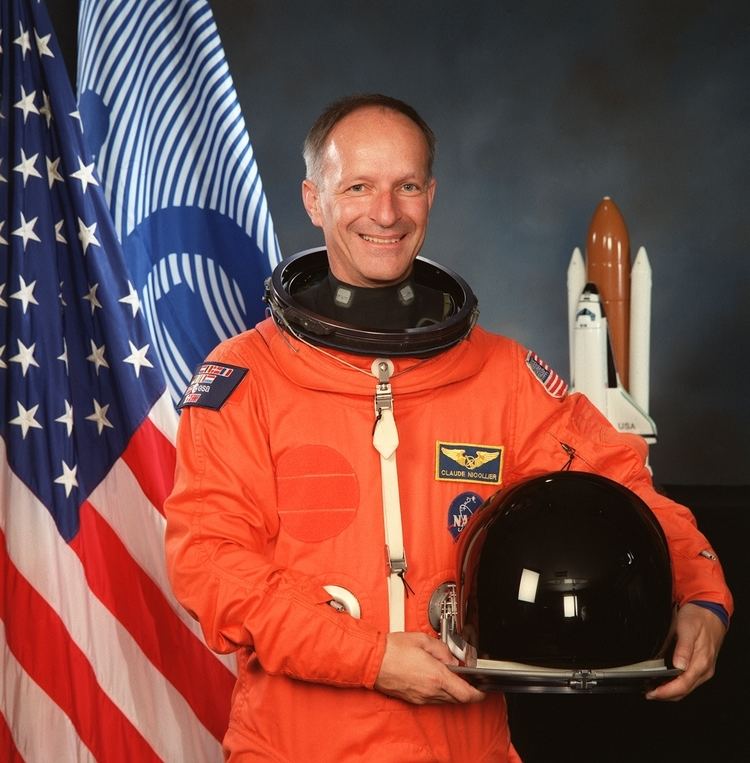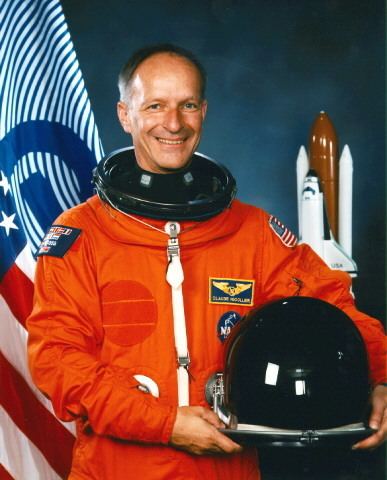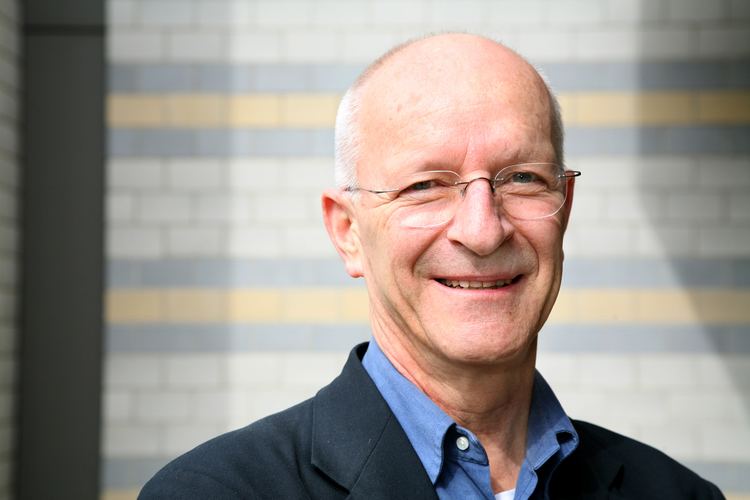Nationality Swiss Mission insignia Status Retired from ESA Name Claude Nicollier | Time in space 42d 12h 05m Role Astronaut Awards Albert Einstein Medal Selection 1978 ESA Group | |
 | ||
Other occupation Professor at Swiss Federal Institute of Technology, Lausanne, Switzerland Similar People Jean‑Francois Clervoy, Michael Foale, Jeffrey A Hoffman, Franco Malerba, Andrew M Allen | ||
The life of an astronaut claude nicollier tedxyouth zurich
Claude Nicollier (born 2 September 1944 in Vevey, Switzerland) is the first astronaut from Switzerland. He has flown on four Space Shuttle missions. His first spaceflight (STS-46) was in 1992, and his final spaceflight (STS-103) was in 1999. He took part in two servicing missions to the Hubble Space Telescope (called STS-61 and STS-103). During his final spaceflight he participated in a spacewalk, becoming the first European Space Agency astronaut to do so during a Space Shuttle mission (previous ESA astronauts conducted spacewalks aboard Mir, see List of spacewalks and moonwalks 1965–1999). In 2000 he was assigned to the Astronaut Office Extravehicular Activity Branch, while maintaining a position as Lead ESA Astronaut in Houston. Nicollier retired from ESA in April 2007.
Contents
- The life of an astronaut claude nicollier tedxyouth zurich
- Swiss astronaut claude nicollier swissnex singapore end of the year 2014 celebration
- Early life and education
- Astronaut career
- STS 51 H
- STS 61 K
- STS 46
- STS 61
- STS 75
- STS 103
- Awards and honors
- Personal life
- References

He was appointed full professor of Spatial Technology at the École Polytechnique Fédérale de Lausanne on 28 March 2007.

He is an expert board member of Swiss Space Systems.

Swiss astronaut claude nicollier swissnex singapore end of the year 2014 celebration
Early life and education
Nicollier was born September 2, 1944. After graduating from the Gymnase de Lausanne (high school) in Lausanne in 1962, he studied physics at the University of Lausanne and received a Bachelor of Science degree in 1970. He then worked as a graduate scientist from 1970 to 1973 at the Institute of Astronomy at the University and at the Geneva Observatory, before obtaining a Master of Science degree in astrophysics from the University of Geneva in 1975. In parallel, he became a Swiss Air Force pilot in 1966,in the Fliegerstaffel 5 on Hawker Hunter where he holds a commission as captain, and has logged 5,600 hours flying time, including 4,000 hours in jet aircraft. Later, in 1988, he graduated as a test pilot from the Empire Test Pilot's School in Boscombe Down, United Kingdom.
In 2004, he started teaching at the École Polytechnique Fédérale de Lausanne, and became a full professor in March 2007.
Astronaut career
Concurrently with his part-time research activities, he joined the Swiss Air Transport School in Zürich and became an airline pilot in 1974, assigned as a DC-9 pilot for Swissair. At the end of 1976, he accepted a Fellowship at the European Space Agency’s (ESA) Space Science Department at Noordwijk, Netherlands, where he worked as a research scientist in various airborne infrared astronomy programs. In July 1978, he was selected by ESA as a member of the first group of European astronauts. Under agreement between ESA and NASA, he joined the NASA astronaut candidates selected in May 1980 for astronaut training as a mission specialist.
His technical assignments in the Astronaut Office have included flight software verification in the Shuttle Avionics Integration Laboratory (SAIL), participation in the development of retrieval techniques for the Tethered Satellite System (TSS), Remote Manipulator System (RMS), and International Space Station (ISS) robotics support. From the Spring of 1996 to the end of 1998, he was Head of the Astronaut Office Robotics Branch. From the year 2000 on, he was assigned to the Astronaut Office EVA (Extravehicular Activity) Branch, while maintaining a position as Lead ESA astronaut in Houston. Nicollier retired from ESA in April 2007.
He is a member of the Swiss Astronomical Society, the Astronomical Society of the Pacific, the Swiss Air Force Officers Society (AVIA), and the Swiss Academy of Engineering Sciences and fellow of the British Interplanetary Society. He is also an honorary member of the Swiss Aero Club, the Swiss Society of Engineers and Architects, and the Swiss Astronomy Day Society.
Nicollier has spent over 1000 hours in space (42 days, 12 hours and 5 minutes), including one space walk lasting 8 hours and 10 minutes. He served as mission specialist on four missions with four different space shuttles.
STS-51-H
His first spaceflight was planned to be STS-51-H, which had been scheduled for November 1985, but was cancelled (technical problems).
STS-61-K
His first spaceflight was planned to be STS-61-K, which had been scheduled for October 1986, but was cancelled following the Space Shuttle Challenger disaster.
STS-46
Nicollier's first spaceflight was as a Mission Specialist on the 8-day Space Shuttle mission aboard Atlantis, called STS-46, in 1992. The crew deployed the European Retrievable Carrier EURECA, as well as the Tethered Satellite System-1, which was a joint NASA and Italian Space Agency project.
STS-61
His second spaceflight was as a Mission Specialist on the 10-day mission aboard Endeavour, called STS-61, in 1993. It was the first mission to service the Hubble Space Telescope, which had been launched three years previously.
STS-75
In 1996 he took part in STS-75, aboard Space Shuttle Columbia, which deployed TSS-1R, which was a follow-up mission to TSS-1 which had been deployed during STS-46.
STS-103
His final spaceflight was an 8-day mission aboard Space Shuttle Discovery, called STS-103, in 1999. It was the third servicing mission to the Hubble Space Telescope. During this mission Nicollier participated in an 8-hour spacewalk; it was his first, and the first of any ESA astronaut during a Space Shuttle mission.
Following his astronaut career, he delivered a lecture on his experiences, “Revisiting Hubble,” at the first Starmus Festival in 2011 in the Canary Islands. The talk was published in the book Starmus: 50 Years of Man in Space.
Awards and honors
Nicollier has received several awards and honors:
Personal life
He is widowed (Susana Perez of Monterrey, Mexico, died December 2007). Together they had two daughters, Maya (born in 1974) and Marina (born in 1978).
